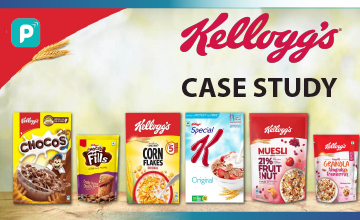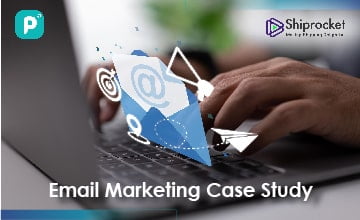Running an online store can be both easy and tiring. There are different ways to do it. One way is to make and sell your products, but that can be quite complicated. Another way is drop shipping. This means you send products directly to customers without having to make, store, or send them yourself. Drop shipping is not simple, but it has big advantages. Email marketing can help you get a lot of customers for your drop shipping business. Utilizing this business model, you can sell numerous products without storing them. Hence, you can experiment with various niches, study market trends, and grow your business. In today’s blog, we’ll talk about drop shipping email marketing campaigns and how to get really good at them.
What is Drop Shipping?
Drop shipping is a business model where retailers don’t keep an inventory of the products they sell. Instead, they partner with suppliers who handle the manufacturing and shipping of the products directly to the customers. This allows retailers to focus on marketing and customer service without the hassle of inventory management and shipping logistics.

The drop shipping model has expanded significantly, with about 33% of online stores now utilizing it as a fulfilment model. This widespread adoption reflects the intense competition within the eCommerce industry.
Steps to Master Drop Shipping Campaigns
It has revolutionized the way businesses operate, allowing entrepreneurs to sell products without the hassle of inventory management and shipping logistics. However, to succeed in the competitive drop shipping industry, mastering email campaigns is crucial.
Let us delve into the steps you can take to maximize the effectiveness of your drop shipping email campaigns.
Step 1: Building an Email List
Begin by constructing a targeted email list comprising potential customers who have expressed interest in your niche or products. Utilize opt-in forms on your website, leverage your social media channels, and consider offering incentives, such as exclusive discounts or freebies, to encourage email sign-ups.
Example: Offer a discount or freebie in exchange for visitors’ email addresses on your website.
Step 2: Segmenting Your Email List
Segmentation allows you to personalize your email campaigns and deliver tailored content to different groups of subscribers. Divide your list based on demographics, purchase history, engagement level, or specific interests. This will enable you to craft emails that resonate with each segment and increase their chances of conversion.
Example: Categorize subscribers based on their purchasing behavior, interests, or demographics to personalize your campaigns.
Step 3: Creating Compelling Email Content
Craft attention-grabbing email content that captivates your subscribers and compels them to take action. Statistics show that personalized subject lines can lead to a 50% increase in open rates. Incorporating the recipient’s name or referencing their previous interactions with your brand can pique their interest and prompt them to open the email.
Ensure that your emails offer value, whether it’s through informative content, exclusive offers, or personalized recommendations. Employ captivating subject lines, concise and clear copy, and engaging visuals to make your emails stand out amidst the clutter.
Example: Use attention-grabbing subject lines like “Limited Time Offer: Save 50% on Our Best-Selling Products!”
Step 4: Leverage the Power of Automation
Embrace email marketing automation tools to streamline your campaigns and save time. Establish automated email sequences for different customer journey stages, including welcome emails, and abandoned cart reminders. These sequences streamline communication and enhance the customer experience. Automation empowers you to deliver timely and relevant messages to your subscribers effortlessly.
Example: Share informative blog posts, product tutorials, or customer success stories to provide value and build trust with your subscribers.
Step 5: Testing and Optimization
Continuously test different elements of your email campaigns, including subject lines, call-to-action buttons, visuals, and email copy. Implement A/B testing to compare different versions of your emails and identify what resonates most with your audience. Analyze performance metrics such as open rates, click-through rates, and conversion rates to optimize your campaigns and enhance results over time.
Example: Use buttons like “Shop Now” or “Claim Your Discount” to encourage readers to take action and make a purchase.
Step 6: Monitoring and Analyzing Results
Regularly monitor the performance of your email campaigns and analyze the data to gain valuable insights. Pay close attention to key metrics such as open rates, click-through rates, conversion rates, and unsubscribe rates. Utilize this data to refine your strategies, make data-driven decisions, and improve the effectiveness of your future email campaigns.
Example: Experiment with different email templates, subject lines, and offers to see what resonates best with your audience. Track open rates, click-through rates, and conversions through analytics.
Importance of Email Marketing for Drop Shipping

Reaching Specific Groups: Email marketing lets you talk to certain groups of customers all at once. For instance, if you want to check in with recent buyers or ask for their feedback, you can email them all together. This shows your customers you care about them, which can lead to more business in the future.
Getting Useful Info: With email marketing, you can see helpful info about your business. This includes things like how many people open your emails, click on links, and more. These details help you figure out what parts of your business need attention, and it helps you get more people involved through engaging emails.
Stopping Cart Abandonment: Sometimes, people put things in their online cart but don’t actually buy them. This is called cart abandonment. It’s not good for sales. Sending emails can remind customers about their cart and encourage them to finish the purchase. When done right, this can lead to more successful checkouts.
Bringing Visitors to Your Store: Email marketing doesn’t just help with sales, it also brings more people to your online store. By sending out emails with news about your products and links to your store, you can attract more customers. It’s a way to keep your store in their minds.
Affordable and Effective: Compared to other ways of advertising, email marketing is a cost-effective method. It lets you connect with a lot of customers without spending too much money. This is really important for making more sales and growing your drop shipping business.
Conclusion
Mastering drop shipping email campaigns is a vital aspect of running a successful drop shipping business. By following the steps outlined in this blog, you can elevate the effectiveness of your email campaigns. This will ultimately drive more traffic and sales to your drop shipping store.
Drop shipping email marketing helps you understand what your customers want. This valuable insight can guide your decisions on what items to order for your drop shipping business. Moreover, email marketing is a low-cost or even cost-free medium that can prove to be more effective than drop shipping advertising.
Ready to skyrocket your drop shipping business? Learn here to master email campaigns for unstoppable growth!
All images belong to their respective owners. Please email [email protected] if removal is required.




